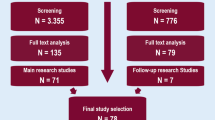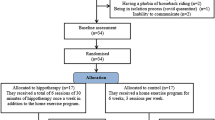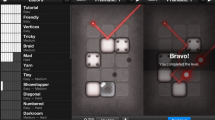Abstract
Sensory integration dysfunction (SID, also known as sensory processing disorder, SPD) is a condition that exists when a person’s multisensory integration fails to process and respond adequately to the demands of the environment. Children with SID (CwSID) are also learners with disabilities with regard to responding adequately to the demands made by a learning environment, and usually have performance difficulties in one or more areas of life, such as productivity, leisure and play, or activities of daily living, and this can reduce their learning motivation. This study tries to develop a motion-sensing digital game-based SID therapy to help such children become more engaged in physical training, with the hope that by improving their bodily-kinesthetic intelligence these children can be more confident of facing various learning challenges, like those associated with social participation. This research applied the Microsoft Kinect system and a specially designed motion-sensing game related to SID, and used interviews to collect responses from the children and their parents. The Chinese version of the sensory profile and clinical observation were applied to evaluate the effects of the therapy, and the triangulation method applied in the data analysis reveals the improvements of all participants in eight clinical observation items. The results imply that our approach was able to increase the learning motivation and actions of the CwSID who participated in this study, with better results than those obtained in our earlier work, which used the Nintendo Wii device and its commercially available games.









Similar content being viewed by others
References
Ahn, R. R., Miller, L. J., Milberger, S., & McIntosh, D. N. (2004). Prevalence of parents’ perceptions of sensory processing disorders among kindergarten children. American Journal of Occupational Therapy, 58(3), 287–293. doi:10.5014/ajot.58.3.287.
Alivandi-Vafa, M., & Ismail, K. H. (2010). Parents as agents of change: What filial therapy has to offer. Procedia—Social and Behavioral Sciences, 5, 2165–2173. doi:10.1016/j.sbspro.2010.07.431.
Aunola, K., & Nurmi, J.-E. (2005). The Role of parenting styles in children’s problem behavior. Child Development, 76(6), 1144–1159. doi:10.1111/j.1467-8624.2005.00840.x-i1.
Ayres, A. J. (1972a). Sensory integration and learning disorders. Los Angeles: Western Psychological Services.
Ayres, A. J. (1972b). Southern california sensory integration tests. Los Angeles: Western Psychological Services.
Ayres, A. J. (1976). The effect of sensory integrative therapy on learning disabled children: The final report of a research project supported by the Center for the Study of Sensory Integrative Dysfunction and the Valentine-Kline Foundation, 1974-1975-1976. Los Angeles: University of Southern California.
Ayres, A. J. (1985). Developmental dyspraxia and adult-onset apraxia. CA: Sensory Integration International.
Ayres, A. J. (1989). Sensory integration and praxis tests. Los Angeles: Western Psychological Services.
Ayres, A. J., & Robbins, J. (1979). Sensory integration and the child. Los Angeles: Western Psychological Services.
Ayres, A. J., & Robbins, J. (2005). Sensory integration and the child: Understanding hidden sensory challenges. Los Angeles: Western Psychological Services.
Barlow, J., Parsons, J., & Stewart-Brown, S. (2005). Preventing emotional and behavioural problems: The effectiveness of parenting programmes with children less than 3 years of age. Child: Care, Health and Development, 31(1), 33–42. doi:10.1111/j.1365-2214.2005.00447.x.
Burns, M. K., Andeway, K., Eppenstein, P., & Ruroede, K. (2014). Use of the Wii gaming system for balance rehabilitation: Establishing parameters for healthy individuals. Games for Health Journal, 3(3), 179–183. doi:10.1089/g4h.2013.0067.
Cattanach, A. (2004). Introduction to play therapy. New York: Taylor & Francis.
Chang, Y. J., Chen, S. F., & Huang, J. D. (2011). A Kinect-based system for physical rehabilitation: A pilot study for young adults with motor disabilities. Research in Developmental Disabilities, 32(6), 2566–2570. doi:10.1016/j.ridd.2011.07.002.
Chang, Y. J., Han, W. Y., & Tsai, Y. C. (2013). A Kinect-based upper limb rehabilitation system to assist people with cerebral palsy. Research in Developmental Disabilities, 34(11), 3654–3659. doi:10.1016/j.ridd.2013.08.021.
Chen, W. D. (2003). A manual guide for children with learning difficulties: Sensory integration therapy. Taiwan: Yuan-Liou Publishing Co., Ltd.
Chuang, T. Y., Kuo, L. Y., Lee, I. C., Tseng, W. F., & Hsu, Y. W. (2013). The Design of Kinect posture game in treating sensory integration dysfunction. In The 21st International Conference on Computers in Education (ICCE), Bali, Indonesia.
Cosbey, J., Johnston, S. S., & Dunn, M. L. (2010). Sensory processing disorders and social participation. American Journal of Occupational Therapy, 64(3), 462–473. doi:10.5014/ajot.2010.09076.
Cummings, E. M., Davies, P. T., & Campbell, S. B. (2002). Developmental psychopathology and family process: Theory, research, and clinical implications. New York: Guilford Press.
Dunn, W. (1999). Sensory profile: User’s manual. San Antonio: Psychological Corporation.
Erhel, S., & Jamet, E. (2013). Digital game-based learning: Impact of instructions and feedback on motivation and learning effectiveness. Computers & Education, 67, 156–167. doi:10.1016/j.compedu.2013.02.019.
Galna, B., Jackson, D., Schofield, G., McNaney, R., Webster, M., Barry, G., et al. (2014). Retraining function in people with Parkinson’s disease using the Microsoft Kinect: Game design and pilot testing. Journal of NeuroEngineering and Rehabilitation, 11(1), 60.
Garzotto, F., Valoriani, M., & Bartoli, L. (2014). Touchless motion-based interaction for therapy of Autistic children. Virtual, Augmented Reality and Serious Games for Healthcare, 1(68), 471–494. doi:10.1007/978-3-642-54816-1_23.
Gil, E. (1994). Play in family therapy. New York: Guilford Press.
Halton, J. (2010). Rehabilitation with the Nintendo Wii: Experiences at a rehabilitation hospital. Occupational Therapy Now, 12(3), 11–14.
Kobak, R., & Esposito, A. (2004). Levels of processing in parent-child relationships: Implications for clinical assessment and treatment. In L. Atkinson & S. Goldberg (Eds.), Attachment issues in psychopathology and intervention (pp. 139). Mahwah, New Jersy, London: Lawrence Erlbaum Associates, Publishers.
Kottman, T. (1999). Integrating the crucial Cs into Adlerian play therapy. Journal of Individual Psychology, 55(3), 288–297.
Kottman, T., & Warlick, J. (1990). Adlerian play therapy. The Journal of Humanistic Education and Development, 28(3), 125–132. doi:10.1002/j.2164-4683.1990.tb00184.x.
Kranowitz, C., & Miller, L. J. (2006). The out-of-sync child. New York: Penguin Group US.
Leblanc, M., & Ritchie, M. (2001). A meta-analysis of play therapy outcomes. Counselling Psychology Quarterly, 14(2), 149–163. doi:10.1080/09515070110059142.
Lee, I. C., & Chuang, T. Y. (2013). The application of digital console game for the treatment of children with sensory integration dysfunction: parental perspective. Medical and Health Science Journal, 14(4), 160–165. doi:10.15208/mhsj.2013.27.
Lohse, K. R., Hilderman, C. G. E., Cheung, K. L., Tatla, S., & Van der Loos, H. F. M. (2014). Virtual reality therapy for adults post-stroke: A systematic review and meta-analysis exploring virtual environments and commercial games in therapy. PLoS ONE, 9(3), e93318. doi:10.1371/journal.pone.0093318.
Miller, L. J., & Fuller, D. A. (2007). Sensational kids: Hope and help for children with sensory processing disorder. New York: Penguin Group US.
Mombarg, R., Jelsma, D., & Hartman, E. (2013). Effect of Wii-intervention on balance of children with poor motor performance. Research in Developmental Disabilities, 34(9), 2996–3003. doi:10.1016/j.ridd.2013.06.008.
Prensky, M. (2007). Digital game-based learning. New York: Paragon House.
Rosenberg, D., Depp, C. A., Vahia, I. V., Reichstadt, J., Palmer, B. W., Kerr, J., et al. (2010). Exergames for subsyndromal depression in older adults: A pilot study of a novel intervention. American Journal of Geriatric Psychiatry, 18(3), 221–226. doi:10.1097/JGP.0b013e3181c534b5.
Shih, S. Y. (2006). An investigation of elementary school students with learning disabilities and sensory integration dysfunctions in Xi An city. Chinese Journal of Special Education, 10, 60–63.
Skotarczak, L., & Lee, G. K. (2015). Effects of parent management training programs on disruptive behavior for children with a developmental disability: A meta-analysis. Research in Developmental Disabilities, 38, 272–287. doi:10.1016/j.ridd.2014.12.004.
Taub, E., Ramey, S. L., DeLuca, S., & Echols, K. (2004). Efficacy of constraint-induced movement therapy for children with cerebral palsy with asymmetric motor impairment. Pediatrics, 113(2), 305–312. doi:10.1542/peds.113.2.305.
Trowell, J., Joffe, I., Campbell, J., Clemente, C., Almqvist, F., Soininen, M., et al. (2007). Childhood depression: A place for psychotherapy. An outcome study comparing individual psychodynamic psychotherapy and family therapy. European Child and Adolescent Psychiatry, 16(3), 157–167. doi:10.1007/s00787-006-0584-x.
Tsung, M. H., & Chen, T. J. (2008). Sensory profile-Chinese version. Taipei: Chinese Behavioral Science Corporation.
VanFleet, R. (2009). Filial play therapy. Washington, DC: APA Psychotherapy.
VanFleet, R., Sywulak, A. E., Sniscak, C. C., & Guerney, L. F. (2011). Child-centered play therapy. New York: Guilford Publications.
Wenar, C., & Kerig, P. (2006). Developmental psychopathology: From infancy through adolescence. Boston: McGraw-Hill.
Williams, M. S., & Shellenberger, S. (1996). How does your engine run?: A leader’s guide to the alert program for self-regulation. Albuquerque: TherapyWorks, Incorporated.
Wilson, K., & Ryan, V. (2005). Play therapy: A non-directive approach for children and adolescents. Philadelphia: Baillière Tindall Elsevier.
Wu, D. S. (2001). A manual guide for integration dysfunctions. Taipei: Honsing Ltd.
Wuang, Y.-P., Wang, C.-C., Huang, M.-H., & Su, C.-Y. (2009). Prospective study of the effect of sensory integration, neurodevelopmental treatment, and perceptual–motor therapy on the sensorimotor performance in children with mild mental retardation. American Journal of Occupational Therapy, 63(4), 441–452. doi:10.5014/ajot.63.4.441.
Acknowledgements
This study was funded by the National Science Council in Taiwan under the research project numbers MOST 103-2511-S-024-009, MOST 104-2511-S-024-006 and MOST 105-2511-S-024-006-MY3 by the Ministry of Science and Technology (formerly as NSC).
Author information
Authors and Affiliations
Corresponding author
Ethics declarations
Conflict of interest
The authors hereby declare that there is no conflict of interest in this article.
Rights and permissions
About this article
Cite this article
Chuang, TY., Kuo, MS., Fan, PL. et al. A kinect-based motion-sensing game therapy to foster the learning of children with sensory integration dysfunction. Education Tech Research Dev 65, 699–717 (2017). https://doi.org/10.1007/s11423-016-9505-y
Published:
Issue Date:
DOI: https://doi.org/10.1007/s11423-016-9505-y




